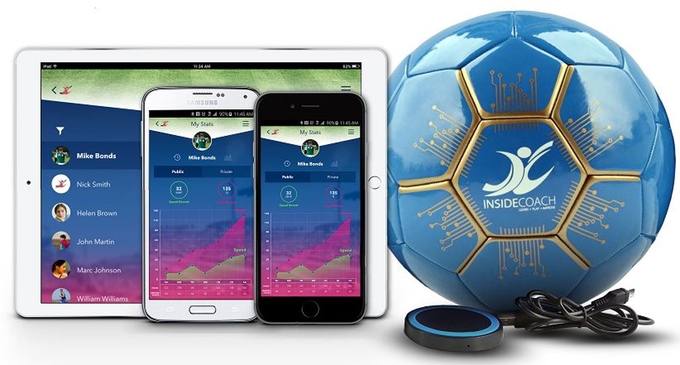A new sensor-laden ball is about to bounce onto the scene that could be your best chance to improve your skills, making you the quick-footed, sharp-shooting, perfect-passing player you always wanted to be.
The InsideCoach smart ball is exactly what it says on the tin – a coach inside a soccer ball. Besides offering real-time coaching cues, its myriad of talents include the ability to detect the ball’s spin and position, the power of a shot or pass, and the trajectory of the ball as it flies through the air, sending all the data via Wi-Fi to the accompanying cross-platform mobile app.
Besides all the stats, the app also offers soccer challenges according to skill levels, step-by-step training videos, and social features that let you compete with friends or other users around the world.
The platform is open source, too, so the startup behind the smart ball is hoping other developers will jump on board over time to create their own apps for InsideCoach.
In addition, as the community of users grows, InsideCoach’s machine-learning system will learn new playing patterns, enabling it to improve the in-app coaching routines that’ll soon have your game looking less messy and more Messi. Hopefully.
Despite the encased technology, the weight and movement of the ball is the same as a regular soccer ball. The battery gives you four hours of playing time, with a convenient wireless charging plate offering an easy way to power it up again.
Two versions of the ball are offered – a regulation size 5 for adults, and a smaller size 4 ideal for kids between 8 and 12. Indeed, the ball’s creators are particularly keen for younger players to enjoy InsideCoach.
“Our main desire is to encourage kids to stay active,” the Utah-based startup says on its website, adding that the main reason “70 percent of kids stop playing sports by age 13” is because it stops being fun. “We want to change that….Kids love video games as an alternative to playing sports because they’re fun and challenging, so we want to provide that experience with InsideCoach’s smart soccer ball.”
InsideCoach is currently a Kickstarter project, but with more than $16,000 of funding already pledged and another seven weeks to go, the smart ball looks all set to hit its $25,000 target.
A $99 pledge will score you one InsideCoach soccer ball, a decent saving on its expected $185 retail price, and significantly lower than what Adidas is charging for its own smart ball effort.
Assuming the project proceeds to plan, you could be taking tips from your InsideCoach smart ball as early as this fall.



